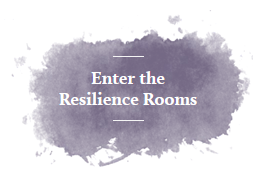What parents need to know about the effects of COVID and cannabis on teens.
- Research suggests that teens are self-medicating with drugs and alcohol during the pandemic and are at risk for developing substance use problems.
- Cannabis use can be particularly harmful to teenagers‘ developing brains — it has been linked to accelerating brain aging, an increased risk of developing schizophrenia, and higher rates of depression and suicide.
- The legalization of marijuana in some places, along with the popularization of vaping, Juuling, and edibles, may make teens think cannabis use is safe.
The rates at which teens are experiencing an increase in their sense of isolation, depression, and loneliness has exponentially increased since the onset of COVID. Incidences of suicidal thinking and behavior are up by 25 percent or more from similar periods in 2019, according to a study regarding young patients coming into the emergency room.
Teens are smoking pot, losing weight, and are engaging in self-destructive behaviors because of distress and boredom. In a comprehensive study of the impact of COVID on 13–22-year-olds, there were sharp spikes from pre-pandemic 2019 to 2020 in a range of psychological conditions including major depression, generalized anxiety disorder, adjustment disorder, self-harm, substance abuse, overdoses, OCD, ADHD, and tic disorders.
Data shows that teens are self-medicating with chemical substances. If teens were already using alcohol and/or drugs, they are likely to continue to do so throughout the pandemic. In a study on a previous crisis, it showed that teenagers may develop substance use problems after the crisis has passed.
Over the year, I have also seen youth who were high on weed and engaged in reckless and impulsive behaviors which lead to severe and long-term consequences. When processing the incidences, the teens and young adults readily noted their impairment and inability to effectively problem solve and assess consequences during these situations. I can’t tell you how many times I have heard from adults and teens alike, “If it’s legal, it must be okay” and “If it’s medicine, it must be safe.”
Teens currently have access to much more potent marijuana today than their parents. They also have access to electronic vaping products and pure THC oils. It may be better on their lungs but far worse for their developing brain. Research clearly indicates that marijuana use can cause lasting harm to the teen brain.
Dr. Daniel Amen, a leading neuroscientist and founder of the ground-breaking brain scan centers, Amen Clinics, recently wrote a book titled Change Your Brain, Change Your Grades. He reports that as a psychiatrist for over 30 years, he has seen many 15, 16 and 17-year-olds whose parents bring them in for an evaluation because they suspect they may have developed ADD or ADHD. They can’t understand why they developed it now, in their teens.
The symptoms that presented themselves included difficulty concentrating, disorganization, lack of motivation, and a decrease in grades. When Dr. Amen looked at brain functioning using a functional brain imaging study called SPECT, the scans didn’t show the familiar patterns associated with ADD. Instead, the scans indicated an exposure to toxins.
In 2016, he and his colleagues published a study of nearly 1,000 cannabis users which showed that virtually every area of the brain was lower in blood flow compared to healthy scans, especially in the hippocampus, one of the brain’s major memory centers. Low blood flow has been seen with depression, suicide, bipolar disorder, schizophrenia, ADHD, traumatic brain injury, hoarding, murder and more. Low blood flow is also the number-one brain imaging predictor that a person will develop Alzheimer’s disease.
Also, in 2018, he and his colleagues published the world’s largest brain imaging study on 62,454 SPECT scans on how the brain ages. Cannabis was associated with accelerated aging in the brain. It revealed that using cannabis as an adolescent is a major risk factor for developing schizophrenia as an adult. It was also found that teens who smoke or ingest cannabis have a higher incidence of depression in their 20’s and a higher incidence of suicide.
Cannabis also hijacks the brain’s reward system and kicks it into high gear. It overstimulates the brain’s pleasure centers, causing teens to require more and more of the substance just to feel normal. Eventually, this increases the risk of addiction and can also lead to depression, among other health, mental health, and socialization issues.
The Impact of Cannabis on Teens
Cannabis use is known to have short-term and long-term effects. Some of the effects include: distorted perception in regard to sights, sounds, time, and touch which can negatively impact driving, problems with memory, learning, focus, and attention, and loss of coordination and timing which can negatively impact athletic performance.
Other impacts include difficulty with thinking and problem-solving, altered judgement, increased heart rate, decrease flow to the brain, decline in IQ, and increased appetite. It can also produce anxiety, fear, distrust, or panic, and raises the risk of depression, psychosis, suicidal thoughts, and suicide attempts. For regular users, there’s also increased risk of heart attacks, reduced bone density, and respiratory problems. Some research also indicates that marijuana is a gateway drug that leads to other drug use.
Generally speaking, about 1 out of every 11 cannabis users will become addicted, but that number increases to 1 out of every 6 people for those who begin using marijuana in their teens. In addition, daily use increases the rate of addiction to between 25% and 50% of cannabis abusers.
The later teens begin using marijuana, the better because their brains are still developing until around age 25. The earlier kids begin to smoke weed, the more likely they are to experience problems. A Duke University study found that children who smoke marijuana at least weekly before age 18 displayed lasting harm to their intelligence, attention, and memory compared with those who began using marijuana after age 18. It also found that quitting marijuana use later did not reverse the cognitive damaged caused by regular marijuana use before age 18.
How Has It Changed?
With the popularization of vaping, juuling, and ingestables (i.e., baked brownies or other foods), teens are under the impression that it is safer than it used to be because it is not being smoked and inhaled directly into the lungs and because it is known to have powerful medicinal benefits.
Because it’s easier to disguise through innocuous devices that emit little or no smoke or scent, teens may be getting away with doing it more often at home and at school. With the ingestables, it takes a while for the body to digest the weed, inadvertently, teens may consume a greater amount of the substance while they are waiting for their high to kick in.
Why Do Teens Try Weed?
Genetic and environmental factors affect which teens will try drugs. Teens try weed because of curiosity, as a coping mechanism to self-medicate because of stress, anxiety, depression, and anger, because of boredom, peer pressure, they have friends who are using and think “what’s the big deal”, lack confidence, are misinformed, to instantly feel euphoric (instant gratification, impulsivity), etc.
Drug and alcohol use are often promoted in the magazines that teens read, programs they watch, and music they listen to. Those influences can be significant for young children.
Children who have been physically or sexually abused are at greater risk than other teens for using marijuana and other drugs. They turn to drugs to escape the fear and pain of abuse.
Children with ADHD and those who were raised by parents who smoke weed, are more likely to try the drug than a child who doesn’t have ADHD and were raised by parents who don’t smoke weed. If they have family members who smoke or express approval of marijuana, research suggests that children are much more likely to begin using marijuana than those with no family involvement with the drug.
According to National Institute of Health’s Monitoring The Future survey, many kids try marijuana because they think it’s less harmful than other illicit drugs, such as cocaine or heroin. Less than 12 percent of high school seniors think trying marijuana once or twice will cause a great risk of harm. And less than one third think smoking marijuana regularly will cause a great risk of harm.
Talking to Teens About Weed
It is expected that many teens will try weed. Parents should stipulate the negative health effects and the risks of addiction. They should additionally collaborate with them on alternative coping mechanisms, make expectations and consequences known about weed use, and enforce the rules in which they set out.
Evidence clearly shows that cannabis use stunts teens’ brain growth and development. Nowhere that marijuana has been made legal for medical or recreational use has it been made legal for anyone under the age of 21. There’s good rationale why not even the most adamant legalization advocates propose making it legal for adolescents and teens to use.
If ever our kids are vulnerable, it is now when they are evidently more isolated, distressed, and bored. Learning effective coping skills is critical presently and post-COVID. We need to stay informed, attuned, and connected to our kids.
Here are some fact sheets to help you and your teen become informed about cannabis:
Smoking Weed: Marijuana Facts for Teens
Marijuana: Facts Parents Need to Know
Marijuana Facts for Teens: Some Things to Think About
Here is a Self-Love and Appreciation Guided Meditation led by me. Please consider subscribing to my channel for more talks and guided meditations.
Blog as posted on Psychology Today.



